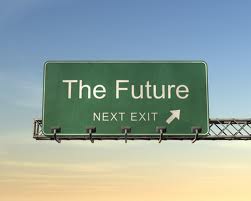Group presentations part II today!
Interesting Observations and Ideas:
I enjoyed Group 3’s presentation on crowd platform because even though the technology is not new (use of internet and document sharing websites), the idea was very fresh. People could share their business ideas to true investors by reaching out to them through the network set up.
This definitely gives people more voice to sound out their opinions! Usually media coverage is only given to significant causes or large groups of people who have caught the media’s attention. However, now with this network set up, independent persons can reach out to large corporations.
Possibly this could be further used in feedback forms to companies? If I were a company, I would make full use of this network and set up one of my own to garner people’s response. However, unlike conventional feedback forms, this new system would encourage people to come up with solutions to the inadequacies they have identified. This would allow the company to know better what consumers want to be changed. In return, the company may pay the consumers for any good ideas that the company used.
Key take-away points:
1. Give a conclusion for the site after discussions! That would allow people to know more about what the group feels about the issue.
2. To have an effective speech, you must 1. Tell people what you want them to know 2. Repeat what you want them to know and 3. Repeat what you told them.
Issues for further discussion:
Our group was the first to present and we presented on epidemic management. During the discussion period, there was an issue that there are many human emotions involved in epidemic management. For example, who to give the cures to?
Even though our group proposed the solutions like web media and game theory, there were further issues if humans should rely on technologies to solve such human problems. Why should our lives depend on some cold formulas? Would people accept such an explanation as to why they did not receive the vaccination?
Definitely, whenever it comes to human related issues, it becomes very tricky. My group concluded that in the event that human emotions cloud the ability to respond well to the epidemic, technologies and mathematical formulas should be utilized.
To add on, there must be reasons and rationales behind how the formula works, since the game theory includes human decisions in it before coming to a conclusion. Hence, if technology or game theory is ever used to determine who should receive the vaccine, the leaders who used such methods must provide explanations why such a method is preferred or will work better than humans alone deciding. The debate over whether we should use technologies to make human decisions is never-ending but we should not give up any opportunity to explain how such techniques may be advantageous.
Personal Ratings for Session: 9.5/10








